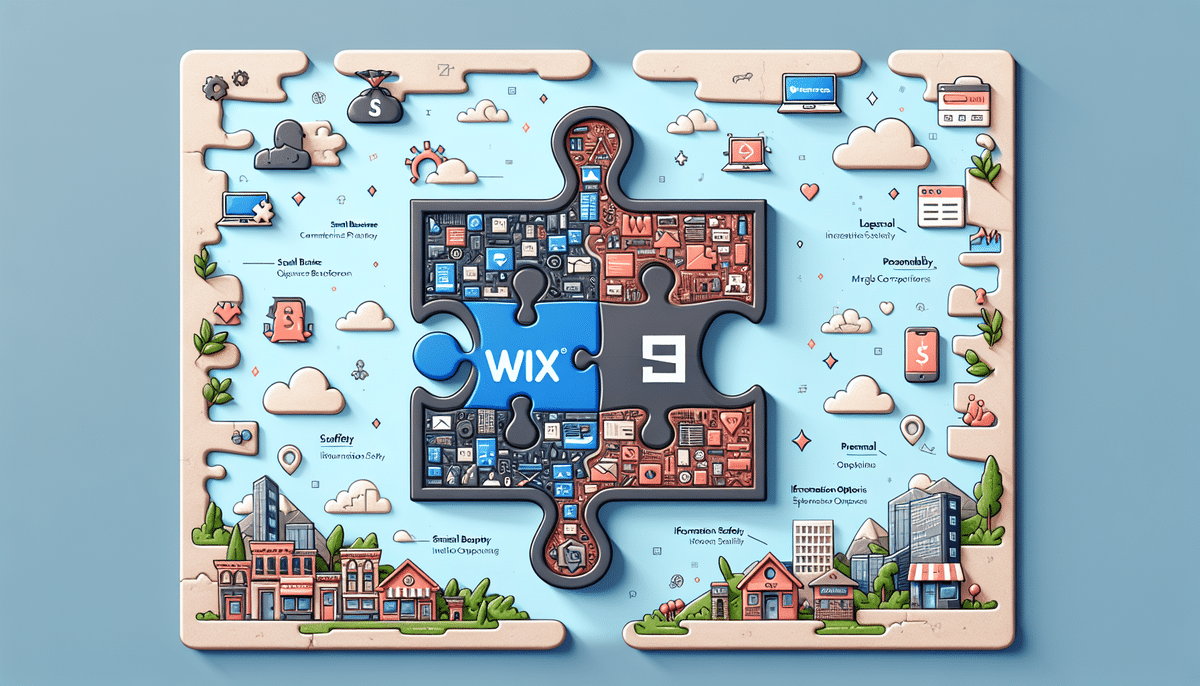Introduction to E-Commerce Platforms: Square Online vs Amazon
Choosing the right e-commerce platform is crucial for the success of your online store. Square Online and Amazon are two of the most prominent players in the market, each offering unique features and benefits. This article provides an in-depth comparison of these platforms, focusing on their features, pricing, customization options, and more to help you determine which is best suited for your business needs.
Key Features and Functionality
Inventory Management
Square Online offers robust inventory management tools that allow businesses to track stock levels, manage multiple locations, and sync inventory across online and offline stores seamlessly. According to a study by Business.com, effective inventory management can reduce costs by up to 20%.
Amazon provides inventory management through its Fulfillment by Amazon (FBA) service, which handles storage, packaging, and shipping. This is particularly beneficial for businesses looking to scale quickly without the hassle of managing logistics.
Payment Processing
Square Online simplifies payment processing with a flat rate of 2.9% + 30 cents per transaction. It supports various payment methods, including credit cards, PayPal, and Apple Pay, ensuring flexibility for customers.
Amazon offers its own payment processing service, Amazon Pay, which integrates seamlessly with its platform. While convenient, the transaction fees may vary based on the selling plan and product category.
Pricing and Fees
Understanding the pricing structure is essential for managing your profit margins effectively.
Square Online
- Free plan available with basic features.
- Premium plans start at $12/month, offering advanced features like custom domains and marketing tools.
- Transparent pricing with no hidden fees.
Amazon
- Professional selling plan costs $39.99/month.
- Referral fees vary by category, typically ranging from 6% to 45%.
- Additional fees for FBA and optional services.
While Square Online offers a straightforward pricing model, Amazon's fees can add up, especially for sellers with lower-priced items. Businesses should evaluate their product pricing strategy to determine which platform offers better cost efficiency.
Customization and Design Options
Creating a unique and branded online store can significantly impact customer perception and loyalty.
Square Online
- Extensive customization options with drag-and-drop builders.
- Ability to add custom CSS and HTML for advanced design tweaks.
- Wide range of professionally designed templates.
Amazon
- Limited customization with predefined storefront layouts.
- Basic branding options, primarily through logo and product listings.
- Focus on a standardized shopping experience to ensure consistency.
Square Online excels in offering design flexibility, allowing businesses to create a distinct online presence. In contrast, Amazon's standardized layout benefits from brand recognition but offers limited customization.
Ease of Use and Setup
The ease with which you can set up and manage your online store can save time and resources.
Square Online
- User-friendly interface with intuitive drag-and-drop functionality.
- Step-by-step setup guides to help users get started quickly.
- Integrated tools for managing sales, inventory, and customer data.
Amazon
- Complex setup process with multiple steps and requirements.
- Extensive resources and documentation available for assistance.
- Steeper learning curve due to the platform's comprehensive features.
Square Online offers a more straightforward setup process, making it ideal for small businesses and beginners. Amazon's platform, while powerful, may require more time and effort to master.
Marketing and SEO Capabilities
Effective marketing and search engine optimization (SEO) are vital for driving traffic and sales.
Square Online
- Built-in SEO tools to optimize product listings and site structure.
- Integrated email marketing and discount campaign features.
- Social media integration for easy product promotion.
Amazon
- Advanced marketing tools like Sponsored Products and Sponsored Brands.
- Access to Amazon’s vast customer base through its search engine.
- Robust analytics tools to track and optimize marketing efforts.
Amazon provides powerful marketing tools and a built-in customer base, which can significantly boost sales. However, Square Online offers comprehensive SEO features that help businesses build their brand identity and attract organic traffic.
Shipping and Fulfillment Options
Efficient shipping and fulfillment processes are essential for customer satisfaction and repeat business.
Square Online
- Custom shipping calculations based on location and product weight.
- Integrations with major shipping carriers for streamlined logistics.
- Option to handle fulfillment in-house or through third-party services.
Amazon
- Fulfillment by Amazon (FBA) handles storage, packaging, and shipping.
- FBA also manages customer service and returns.
- FBA fees can be significant but offer scalability and efficiency.
Square Online provides flexibility in managing shipping and fulfillment, allowing businesses to maintain control over their processes. Amazon’s FBA service offers a hassle-free solution but at a higher cost, which might be more suitable for larger enterprises.
Customer Support and Resources
Reliable customer support is crucial for resolving issues and maintaining smooth operations.
Square Online
- 24/7 customer support via phone, email, and live chat.
- Extensive knowledge base and community forums.
- Dedicated account managers for premium plans.
Amazon
- Comprehensive help center with detailed guides and FAQs.
- Support available through email and phone for account-related issues.
- Less personalized support compared to Square Online.
Square Online offers more personalized and accessible customer support options, which can be beneficial for businesses seeking hands-on assistance. Amazon’s support is extensive but may lack the personalized touch that some businesses require.
Pros and Cons of Square Online vs Amazon
Square Online
- Pros: Easy to set up, transparent pricing, highly customizable, excellent customer support.
- Cons: Limited built-in customer base, may require additional marketing efforts.
Amazon
- Pros: Vast reach and customer base, powerful marketing tools, scalable fulfillment options.
- Cons: Higher and variable fees, limited customization, complex policies.
Both platforms have their strengths and weaknesses. Square Online is ideal for businesses looking for customization and simplicity, while Amazon excels in reach and scalability.
Final Recommendations: Which Platform is Right for Your Business?
Best for Small Businesses and Startups
Square Online is recommended for small businesses and startups due to its user-friendly interface, affordable pricing, and extensive customization options. It allows entrepreneurs to build a unique brand presence without the complexities associated with larger platforms.
Best for Large Enterprises and High Volume Sellers
Amazon is better suited for large enterprises and sellers with high-volume sales. Its vast customer base, advanced marketing tools, and comprehensive fulfillment services like FBA provide the infrastructure needed to scale operations efficiently.
Conclusion
Both Square Online and Amazon offer comprehensive e-commerce solutions tailored to different business needs. By evaluating your specific requirements in terms of features, pricing, customization, and support, you can make an informed decision that aligns with your business goals. Whether you choose the flexibility of Square Online or the expansive reach of Amazon, investing time and effort into optimizing your online store will pave the way for sustained growth and success.






















